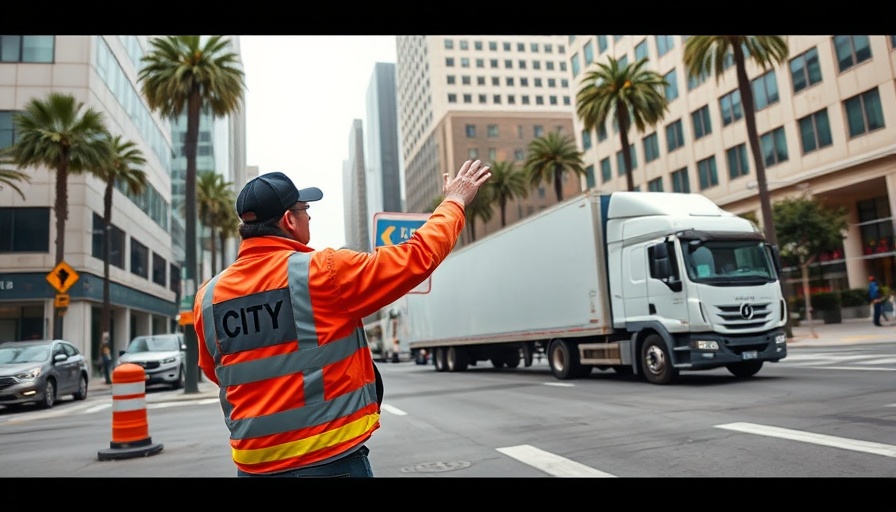
The Cleanup Crew: A Quick Response
As the sun rose over San Francisco on June 9th, the usually bustling Mission Street presented an alarming sight. By 8 a.m., what should have been the vibrant heart of the neighborhood was marred by trash and ash, remnants of a small fire that had broken out earlier. Luckily, the Department of Public Works (DPW) was quick on the scene, exhibiting a remarkable community response.
Within minutes, crews descended on the area, equipped with trucks, brooms, and debris bags. Their emergence was a welcomed sight for locals, who hoped to restore the street's dignity before the day picked up pace. Among the workers was Fredisha, a local resident who often spends the night in the plaza and took it upon herself to help clean up. “It's just a mess, and someone has to clean it up,” she remarked, showcasing a spirit of solidarity that is crucial in tough times.
A Lesson in Community Resilience
This incident at the 16th Street Plaza goes beyond mere trash collection; it highlights how local communities can rally together in times of need. The fire, reportedly caused by someone setting a pair of skis ablaze, may seem trivial, but it embodies larger social challenges faced by urban neighborhoods. Organizing cleanups and problem-solving collaboratively helps not only beautify the space but also fosters connections among residents.
Such moments reflect the broader theme of community resilience. When residents actively participate in maintaining their surroundings, it cultivates a sense of ownership and responsibility. Imagine if every city block had individuals like Fredisha stepping up to contribute. This interactive dynamic not only improves public health but also builds relationships that make cities warmer and safer.
The Broader Implications of Local Actions
The actions of the DPW and engaged community members are part of a larger story about public safety and urban living. San Francisco, like many urban centers, faces challenges related to sanitation, safety, and homelessness. Monthly city council discussions often revolve around how to allocate resources effectively to tackle these issues. Discovering ways to address these complex matters helps define the city’s future and is a call to action for citizens everywhere to engage in local initiatives.
The recovery and beautification efforts after the fire serve as crucial reminders that change often begins at the grassroots level. Such movements not only have immediate results but can lead to long-lasting improvements in neighborhood vitality. Understanding the interconnectedness of these efforts can empower citizens to advocate effectively for their streets and inspire city governance.
Always Room for Improvement
This incident also raises questions about prevention strategies. Incidents like these urge city officials to consider not only how to respond to emergencies but also how to prevent them. Safety programs and educational campaigns geared toward fire prevention and responsible waste management could serve as proactive measures for cities that face these recurring issues.
Long-term planning and community-based programs can lead to sustainable solutions. Encouraging responsible behaviors, such as proper disposal of waste, could reduce similar incidents in the future, ultimately creating safer and cleaner spaces.
What This Means for Local Residents
The events on June 9th, while momentarily chaotic, reveal much about how residents and city services interact in real-time to safeguard the community's well-being. As San Francisco grapples with competing priorities from urban development to public safety, the effective collaboration between public workers and engaged residents remains essential to facing these challenges head-on.
For parents, adults, and singles navigating the complexities of urban life, these situations highlight just how pivotal involvement is within one’s community. As this city continues to evolve, residents are reminded that they play a vital role in the health of their neighborhoods.
Looking Forward: Community Futures
As we move forward, it is crucial to embrace a proactive approach to urban living. Initiatives that encourage participation in neighborhood cleaning and safety maintenance can help foster communal relationships and invigorate civic pride. These engagements should be viewed as opportunities for all to contribute and celebrate the uniqueness of San Francisco.
Ultimately, the blend of a vibrant local economy, responsive city services, and a conscious, engaged community is what will continue to define areas like the 16th Street Plaza. The recent cleanup reminds us that collaboration is vital and that every little effort contributes to a healthier, happier urban environment.
 Add Row
Add Row  Add
Add 




 Add Row
Add Row  Add
Add 

Write A Comment